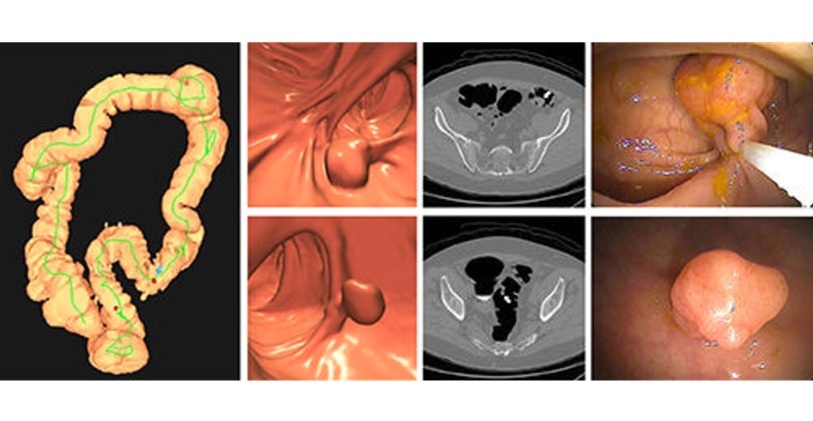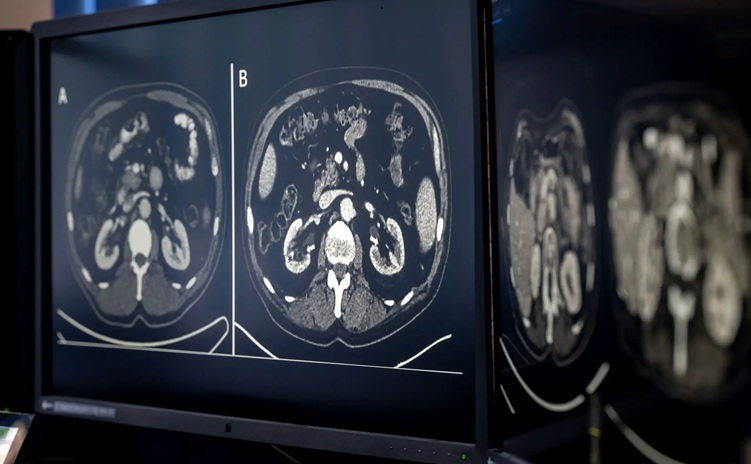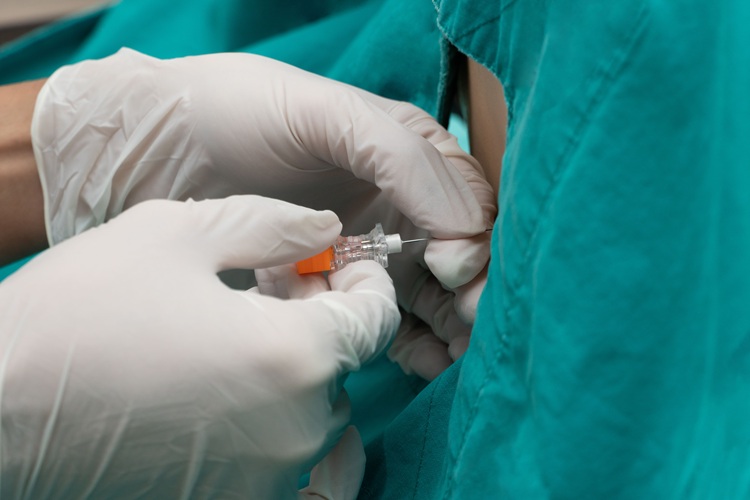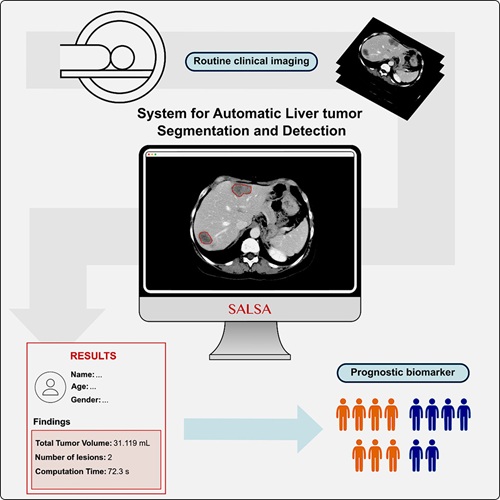DR Tools Designed for Neonatal Imaging, Bone and Soft Tissue Detailing
|
By MedImaging International staff writers Posted on 18 Jun 2013 |
Two new direct radiography (DR) applications take image processing to a new level by rendering excellent bone and soft tissue detail simultaneously in one exposure, and provide specialty radiologists with improved image processing for challenging exams. Both applications are designed to maximize radiographic detail and provide workflow efficiency.
Agfa HealthCare (Mortsel, Belgium) reported on the North American launch of its NX Musica2 Platinum and NX Musica2 Neonatal systems, which provide enhanced detail across the complete dynamic range of the image for enhanced contrast, sharpness, and density required by radiology specialists.
NX Musica2 Platinum provides fine-tuned abdomen, chest, and musculoskeletal presets for both adult and pediatric patients. Special image processing defaults can be automatically applied for up to four different pediatric age groups. NX Musica2 Platinum, designed for these individual applications, solves the problem of many large healthcare networks and university medical centers to have dedicated image processing that shows increased emphasis on soft tissue or bony structures, depending on the exam type.
NX Musica2 Neonatal image processing includes algorithms tuned specifically for the neonatal patient, providing excellent contrast and detail without increasing noise—even on lower dose exams. Using Musica2 Neonatal and Musica2 GenRad (general radiology), physicians can rapidly and easily customize imaging perimeters for the overall patient population as well as their dose-sensitive neonatal patients. Installation and set-up is easy; workflow is improved because all Musica2 image processing is fully automatic with DR exposures. Radiologists, technologists, and clinicians seldom, if ever, need to postprocess or window/level images to view all pertinent anatomy rendered in a single Musica2 image.
“Agfa HealthCare continues to raise the bar for image quality in radiology with new innovations in image processing. Our most recent advances in technology address the demanding field of pediatric and neonatal imaging with NX Musica2 Platinum and NX Musica2 Neonatal, giving diagnostic confidence when it matters the most,” said Greg Cefalo, US digital radiography business unit manager, Agfa HealthCare.
“Especially in the neonatal environment where subtlety of image detail is important, enhanced features help detect minute daily changes to provide physicians with the confidence for urgent clinical decision-making. Agfa HealthCare’s image processing algorithm used in NX Musica2 Neonatal is finely tuned to the special imaging needs of the neonate,” said Mr. Cefalo. “For example, Musica Neonatal enhances detail in the low-contrast neonatal bones without adding the additional unwanted noise that traditional image processing creates. These attributes, combined with comprehensive dose management tools, provide excellent image capture technology for radiology’s most demanding newborn and premature patients.”
Related Links:
Agfa HealthCare
Agfa HealthCare (Mortsel, Belgium) reported on the North American launch of its NX Musica2 Platinum and NX Musica2 Neonatal systems, which provide enhanced detail across the complete dynamic range of the image for enhanced contrast, sharpness, and density required by radiology specialists.
NX Musica2 Platinum provides fine-tuned abdomen, chest, and musculoskeletal presets for both adult and pediatric patients. Special image processing defaults can be automatically applied for up to four different pediatric age groups. NX Musica2 Platinum, designed for these individual applications, solves the problem of many large healthcare networks and university medical centers to have dedicated image processing that shows increased emphasis on soft tissue or bony structures, depending on the exam type.
NX Musica2 Neonatal image processing includes algorithms tuned specifically for the neonatal patient, providing excellent contrast and detail without increasing noise—even on lower dose exams. Using Musica2 Neonatal and Musica2 GenRad (general radiology), physicians can rapidly and easily customize imaging perimeters for the overall patient population as well as their dose-sensitive neonatal patients. Installation and set-up is easy; workflow is improved because all Musica2 image processing is fully automatic with DR exposures. Radiologists, technologists, and clinicians seldom, if ever, need to postprocess or window/level images to view all pertinent anatomy rendered in a single Musica2 image.
“Agfa HealthCare continues to raise the bar for image quality in radiology with new innovations in image processing. Our most recent advances in technology address the demanding field of pediatric and neonatal imaging with NX Musica2 Platinum and NX Musica2 Neonatal, giving diagnostic confidence when it matters the most,” said Greg Cefalo, US digital radiography business unit manager, Agfa HealthCare.
“Especially in the neonatal environment where subtlety of image detail is important, enhanced features help detect minute daily changes to provide physicians with the confidence for urgent clinical decision-making. Agfa HealthCare’s image processing algorithm used in NX Musica2 Neonatal is finely tuned to the special imaging needs of the neonate,” said Mr. Cefalo. “For example, Musica Neonatal enhances detail in the low-contrast neonatal bones without adding the additional unwanted noise that traditional image processing creates. These attributes, combined with comprehensive dose management tools, provide excellent image capture technology for radiology’s most demanding newborn and premature patients.”
Related Links:
Agfa HealthCare
Latest Radiography News
- AI Radiology Tool Identifies Life-Threatening Conditions in Milliseconds

- Machine Learning Algorithm Identifies Cardiovascular Risk from Routine Bone Density Scans
- AI Improves Early Detection of Interval Breast Cancers
- World's Largest Class Single Crystal Diamond Radiation Detector Opens New Possibilities for Diagnostic Imaging
- AI-Powered Imaging Technique Shows Promise in Evaluating Patients for PCI
- Higher Chest X-Ray Usage Catches Lung Cancer Earlier and Improves Survival
- AI-Powered Mammograms Predict Cardiovascular Risk
- Generative AI Model Significantly Reduces Chest X-Ray Reading Time
- AI-Powered Mammography Screening Boosts Cancer Detection in Single-Reader Settings
- Photon Counting Detectors Promise Fast Color X-Ray Images
- AI Can Flag Mammograms for Supplemental MRI
- 3D CT Imaging from Single X-Ray Projection Reduces Radiation Exposure
- AI Method Accurately Predicts Breast Cancer Risk by Analyzing Multiple Mammograms
- Printable Organic X-Ray Sensors Could Transform Treatment for Cancer Patients
- Highly Sensitive, Foldable Detector to Make X-Rays Safer
- Novel Breast Cancer Screening Technology Could Offer Superior Alternative to Mammogram
Channels
MRI
view channel
New MRI Technique Reveals Hidden Heart Issues
Traditional exercise stress tests conducted within an MRI machine require patients to lie flat, a position that artificially improves heart function by increasing stroke volume due to gravity-driven blood... Read more
Shorter MRI Exam Effectively Detects Cancer in Dense Breasts
Women with extremely dense breasts face a higher risk of missed breast cancer diagnoses, as dense glandular and fibrous tissue can obscure tumors on mammograms. While breast MRI is recommended for supplemental... Read moreUltrasound
view channel
New Incision-Free Technique Halts Growth of Debilitating Brain Lesions
Cerebral cavernous malformations (CCMs), also known as cavernomas, are abnormal clusters of blood vessels that can grow in the brain, spinal cord, or other parts of the body. While most cases remain asymptomatic,... Read more.jpeg)
AI-Powered Lung Ultrasound Outperforms Human Experts in Tuberculosis Diagnosis
Despite global declines in tuberculosis (TB) rates in previous years, the incidence of TB rose by 4.6% from 2020 to 2023. Early screening and rapid diagnosis are essential elements of the World Health... Read moreNuclear Medicine
view channel
New Imaging Approach Could Reduce Need for Biopsies to Monitor Prostate Cancer
Prostate cancer is the second leading cause of cancer-related death among men in the United States. However, the majority of older men diagnosed with prostate cancer have slow-growing, low-risk forms of... Read more
Novel Radiolabeled Antibody Improves Diagnosis and Treatment of Solid Tumors
Interleukin-13 receptor α-2 (IL13Rα2) is a cell surface receptor commonly found in solid tumors such as glioblastoma, melanoma, and breast cancer. It is minimally expressed in normal tissues, making it... Read moreGeneral/Advanced Imaging
view channel
CT Colonography Beats Stool DNA Testing for Colon Cancer Screening
As colorectal cancer remains the second leading cause of cancer-related deaths worldwide, early detection through screening is vital to reduce advanced-stage treatments and associated costs.... Read more
First-Of-Its-Kind Wearable Device Offers Revolutionary Alternative to CT Scans
Currently, patients with conditions such as heart failure, pneumonia, or respiratory distress often require multiple imaging procedures that are intermittent, disruptive, and involve high levels of radiation.... Read more
AI-Based CT Scan Analysis Predicts Early-Stage Kidney Damage Due to Cancer Treatments
Radioligand therapy, a form of targeted nuclear medicine, has recently gained attention for its potential in treating specific types of tumors. However, one of the potential side effects of this therapy... Read moreImaging IT
view channel
New Google Cloud Medical Imaging Suite Makes Imaging Healthcare Data More Accessible
Medical imaging is a critical tool used to diagnose patients, and there are billions of medical images scanned globally each year. Imaging data accounts for about 90% of all healthcare data1 and, until... Read more
Global AI in Medical Diagnostics Market to Be Driven by Demand for Image Recognition in Radiology
The global artificial intelligence (AI) in medical diagnostics market is expanding with early disease detection being one of its key applications and image recognition becoming a compelling consumer proposition... Read moreIndustry News
view channel
GE HealthCare and NVIDIA Collaboration to Reimagine Diagnostic Imaging
GE HealthCare (Chicago, IL, USA) has entered into a collaboration with NVIDIA (Santa Clara, CA, USA), expanding the existing relationship between the two companies to focus on pioneering innovation in... Read more
Patient-Specific 3D-Printed Phantoms Transform CT Imaging
New research has highlighted how anatomically precise, patient-specific 3D-printed phantoms are proving to be scalable, cost-effective, and efficient tools in the development of new CT scan algorithms... Read more
Siemens and Sectra Collaborate on Enhancing Radiology Workflows
Siemens Healthineers (Forchheim, Germany) and Sectra (Linköping, Sweden) have entered into a collaboration aimed at enhancing radiologists' diagnostic capabilities and, in turn, improving patient care... Read more




















